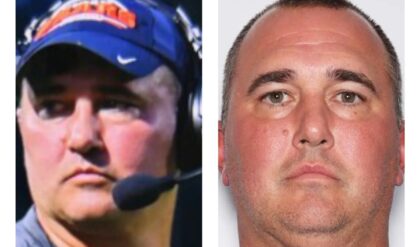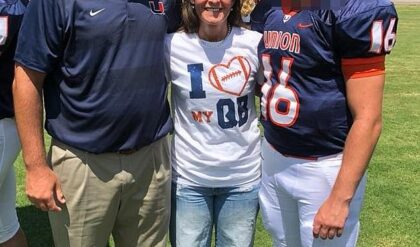Every Clint Eastwood Western has at least one iconic standoff and incredible shootout, but some of these scenes stand above the rest as the best.
Clint Eastwood is known for his contribution to the Western genre, and one of the hallmarks of these movies are the iconic shootouts that take place across so many films. Whether it’s between Eastwood and a dastardly villain or simply him proving his skills by taking out lesser antagonists, it’s always impressive to see Eastwood’s characters work with a gun. Additionally, his Westerns stand out because violence is rarely simply for violence’s sake, and works to progress the story forward, providing insight into the characters’ motivations, and making a comment on American cinema.
As his career progressed, Eastwood made sure to look at the Western genre with a critical eye and closely examine his place within it.
All the gunslingers played by Clint Eastwood were deadly, but only a few had the opportunity to be in his greatest films. Not every Eastwood Western is as high-quality as his most memorable and effective. As his career progressed, Eastwood made sure to look at the Western genre with a critical eye and closely examine his place within it. In the films he directed, he looked into what these shootouts meant, and why the protagonists he played were elevated to the position of hero despite their brutal actions.
7The Ranch – The Outlaw Josey Wales (1976)
A man bent on revenge chases his enemy across the West
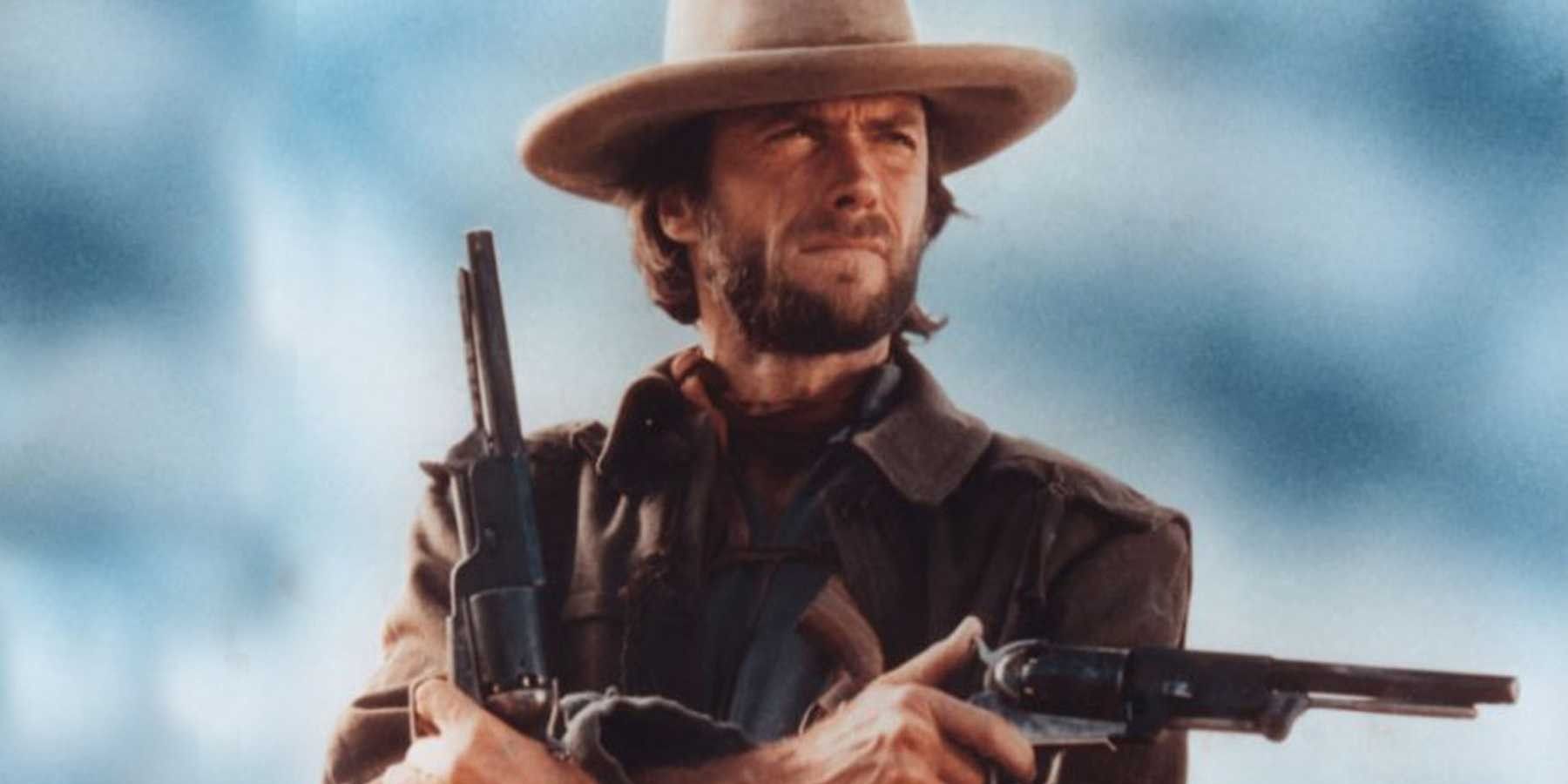
The last section of the film is dedicated solely to Josey Wales (Eastwood), closing in on the man, Captain Terrill (Bill McKinney) who murdered his family.
The Outlaw Josey Wales is a story of vengeance and like any tale with a protagonist out for revenge, there’s plenty of violence. The last section of the film is dedicated solely to Josey Wales (Eastwood), closing in on the man, Captain Terrill (Bill McKinney) who murdered his family. This shootout is more like a prolonged series of confrontations at a ranch and then extends to a chase scene when Terrill flees after Wales and his allies corner Terrill and his men. A sword, a period-accurate weapon, ultimately kills Terrill, as the film takes place during the Civil War.
However, the ranch shootout is just as thrilling and well-directed. Using the ranch as a point of conflict and a set piece creates a recognizable finale for an action-packed film. The Outlaw Josey Wales has some extremely outdated depictions of Indigenous Americans. Additionally, it gives an unexpected portrayal of the Civil War, but it’s important to remember that the film is a piece of revisionist history. What the movie is most concerned with is giving Wales his due and allowing him to achieve moments of intense victory over his enemy.
6Barbershop Shooting – High Plains Drifter (1973)
In his introduction to the town, Eastwood has a shave and leaves a bloody mark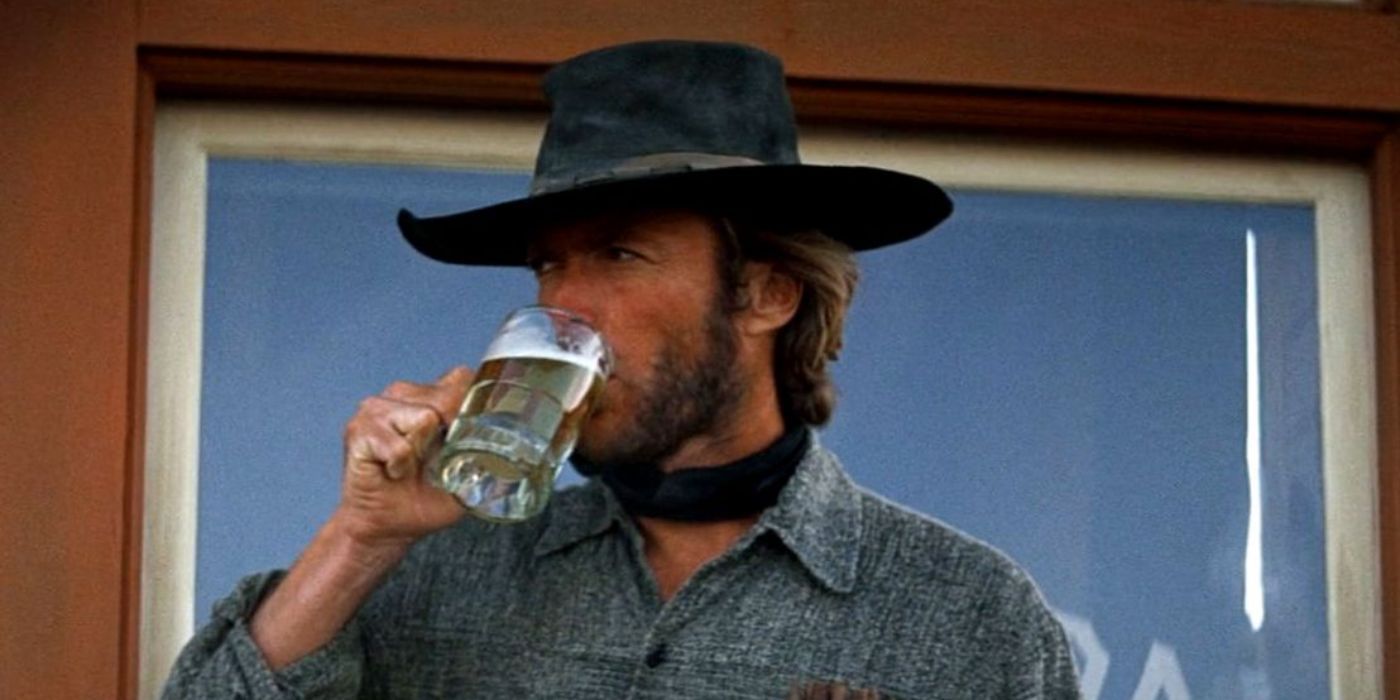
High Plains Drifter includes one of the best villains in Clint Eastwood movies, Eastwood himself as The Stranger, the brutal anti-hero who treats everyone with equal contempt. It’s obvious from the first moment he steps onscreen that The Stranger is not a man to take lightly. He wastes no time in showing this to the men in town who try to intimate him. The Stranger is one of the most terrifying characters Eastwood has ever played because his moral compass is so far removed from what the audience expects, that his horrible acts of violence are impossible to justify.
Despite this, it’s still easy to root against the men he comes up against, especially when they foolishly insult him, not knowing who they’re dealing with. There’s a brutal scene where he’s being shaved at a local barbershop and a group of men corner him. He barely moves his hand when suddenly the men are shot dead, and The Stranger still has shaving cream on his face. It’s clear that audiences are supposed to view The Stranger as the cruel hand of white men moving in on the West, and High Plains Drifter shows this from the beginning.
5Preacher Vs. Stockburn – Pale Rider (1985)
A ghostly hero comes up against a wealthy landowner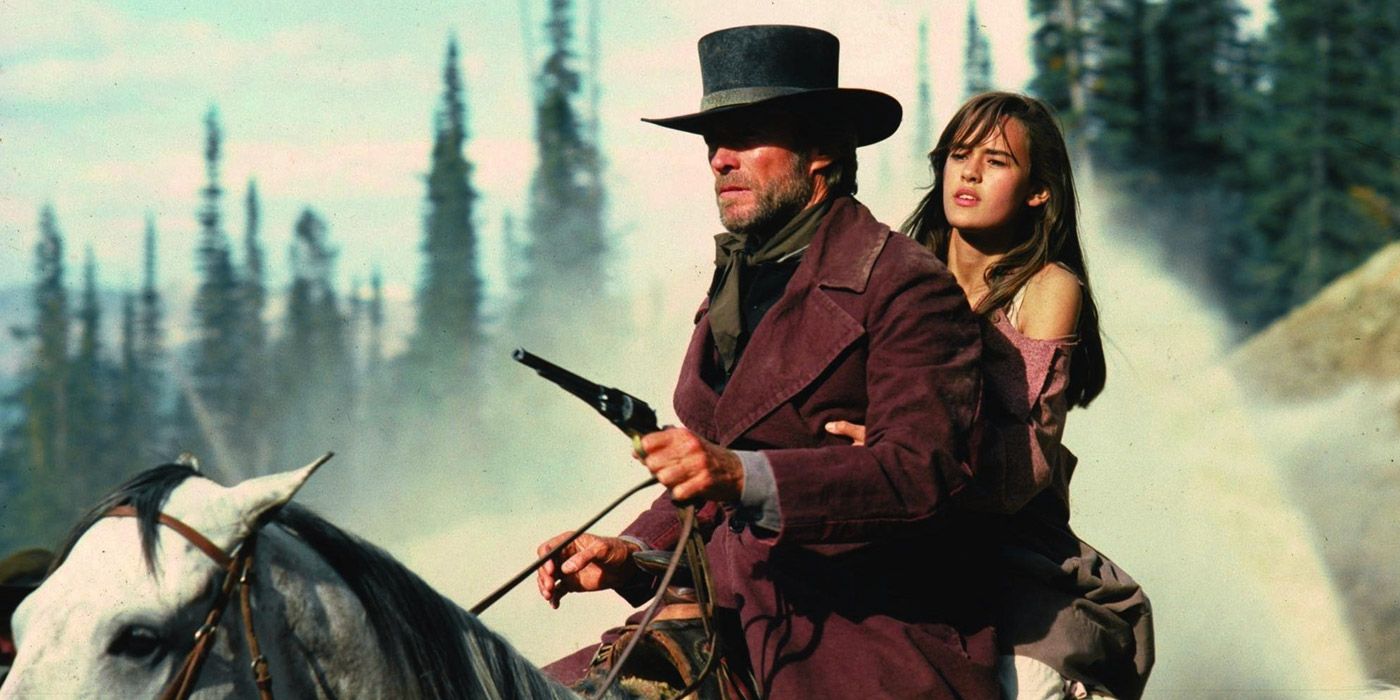
Land ownership, gold, and the establishment of society are frequent themes across the Western genre, and Pale Rider deals directly with the three of them. When Eastwood’s Preacher rolls into town he finds that Coy LaHood (Richard Dysart) controls most of the land and resources in the area which he thinks gives him the right to control the law. This means the sheriff, Marshal Stockburn (John Russell), is on his payroll and intimidates gold miners off their property. Of course, Preacher cannot let this stand, and LaHood and Stockburn end up on the wrong side of his gun.
Stockburn himself believes that Preacher is dead because he witnessed his shooting, so when they come face to face and Stockburn sees him in the flesh, it is a chilling surprise.
There is debate over whether Preacher is a ghost, the embodiment of death, or merely an otherworldly stranger who can withstand violence so long as he is doing good. Stockburn himself believes that Preacher is dead because he witnessed his shooting, so when they come face to face and Stockburn sees him in the flesh, it is a chilling surprise. After shocking Stockburn with his presence, Preacher seamlessly guns him down, but not before taking out every single one of his deputies, striking terror in their hearts.
4Final Standoff – For A Few Dollars More (1965)
A cursed pocket watch spells trouble for Eastwood and his ally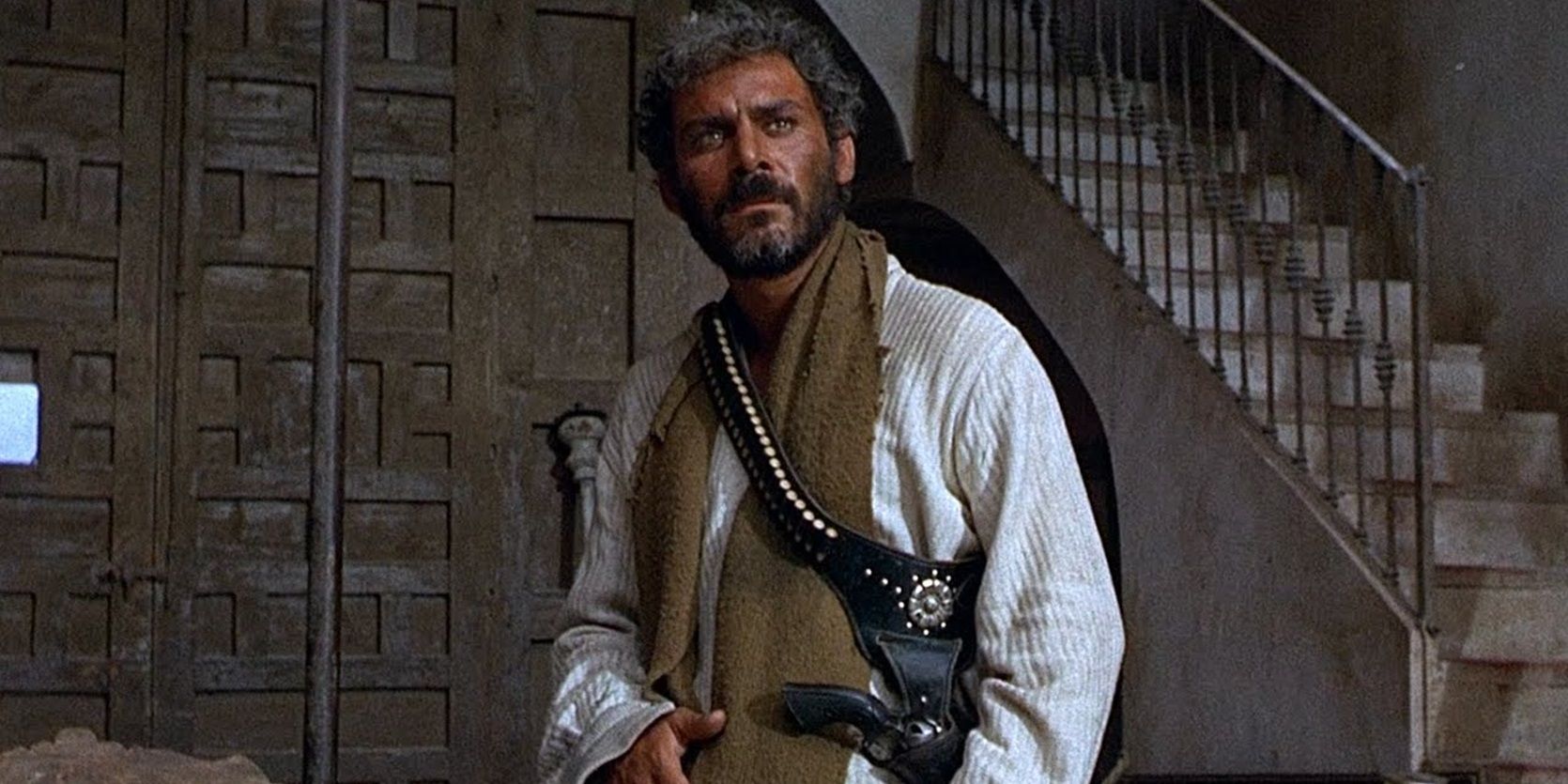
The follow-up to A Fistful of Dollars, For A Few Dollars More, improved upon the trilogy in many ways, and even if the last moments aren’t the best of the series, they’re still a standout of Eastwood’s filmography. El Indio (Gian Maria Volonté) is a fantastic villain, and his arc is what makes his standoff with Manco/The Man with No Name emotionally impactful and resonant. There is a pocket watch that El Indio carries throughout the movie that reminds him of one of his most unforgivable actions which is tearing away at his psyche.
It’s later revealed that this pocket watch ties him to Mortier (Lee Van Cleef), Manco’s partner. In some ways, Mortimer is just as much of the protagonist as Manco, and he is the one who ends up killing El Indio in the standoff. Since Eastwood himself doesn’t pull the trigger, it’s not quite as memorable as his other gunfights, but the subversion of expectations shows the lessons the director, Sergio Leone, learned from the first movie. As always, Eastwood’s character is a drifter who lends his gun and ability to whoever needs it most.
3Final Standoff – A Fistful Of Dollars (1964)
A trick of cunning and speed puts Eastwood a step ahead of his competition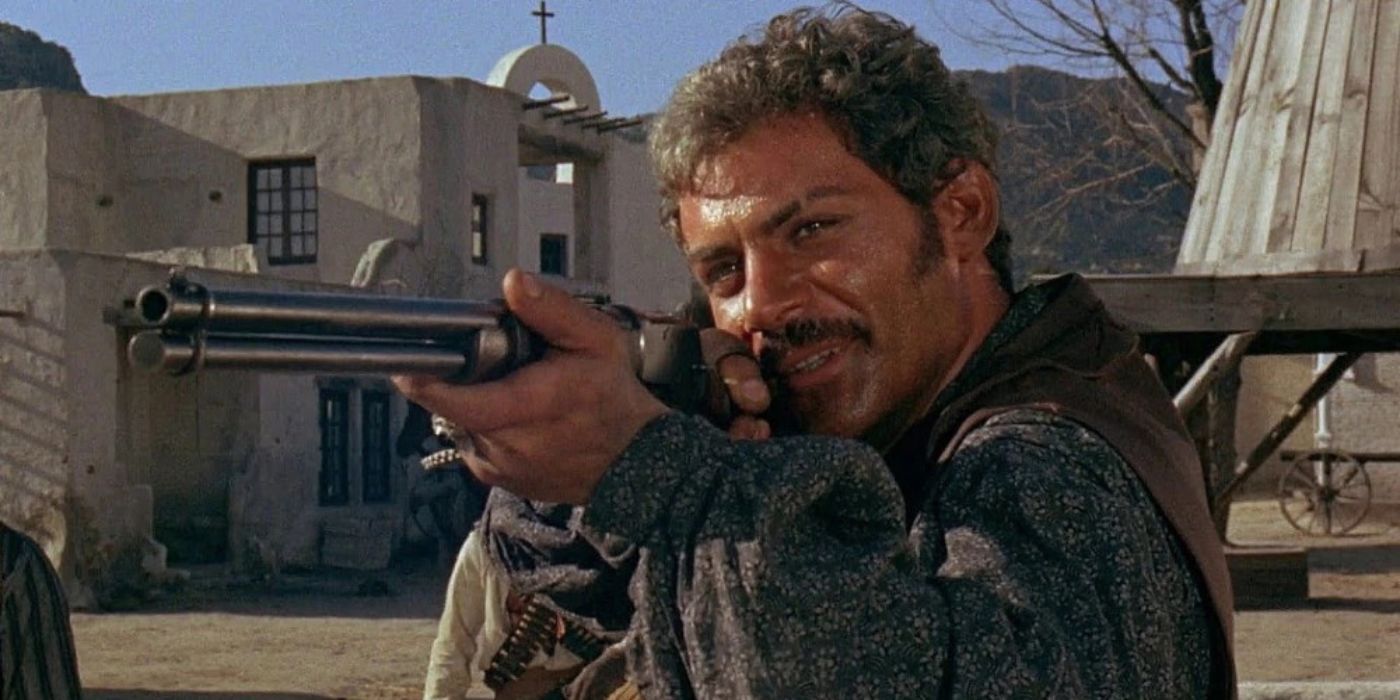
Any final shootout must make its mark on the film and deliver a satisfying end to the movie, and A Fistful of Dollars does this brilliantly.
The first of the Man With No Name Trilogy, A Fistful of Dollars, is iconic simply for propelling Eastwood into Western fame, but it wouldn’t be so well-remembered if not for the impact final scene. Any final shootout must make its mark on the film and deliver a satisfying end to the movie, and A Fistful of Dollars does this brilliantly. By 1964, the Western had already become popular, and the tropes were familiar to audiences. A Fistful of Dollars brought new life to the final standoff by having the Stranger (Eastwood) wear hidden body armor underneath his clothes.
This mystifies and frustrates his enemy, who keeps shooting until he’s out of bullets. The final moments of his duel with Ramón (Gian Maria Volonté) come down to a test of speed, as the Stranger quickly reloads his gun and shoots Ramón where he stands before Ramón can do the same. There is an equally iconic scene at the start of the movie which is one of the best moments in the Man With No Man Trilogy, featuring the Stranger gunning down four men to prove his mettle. However, the concluding standoff is the highlight of the film.
2Munny Vs. Daggett’s Men – Unforgiven (1992)
Eastwood against a bar full of men all out to get him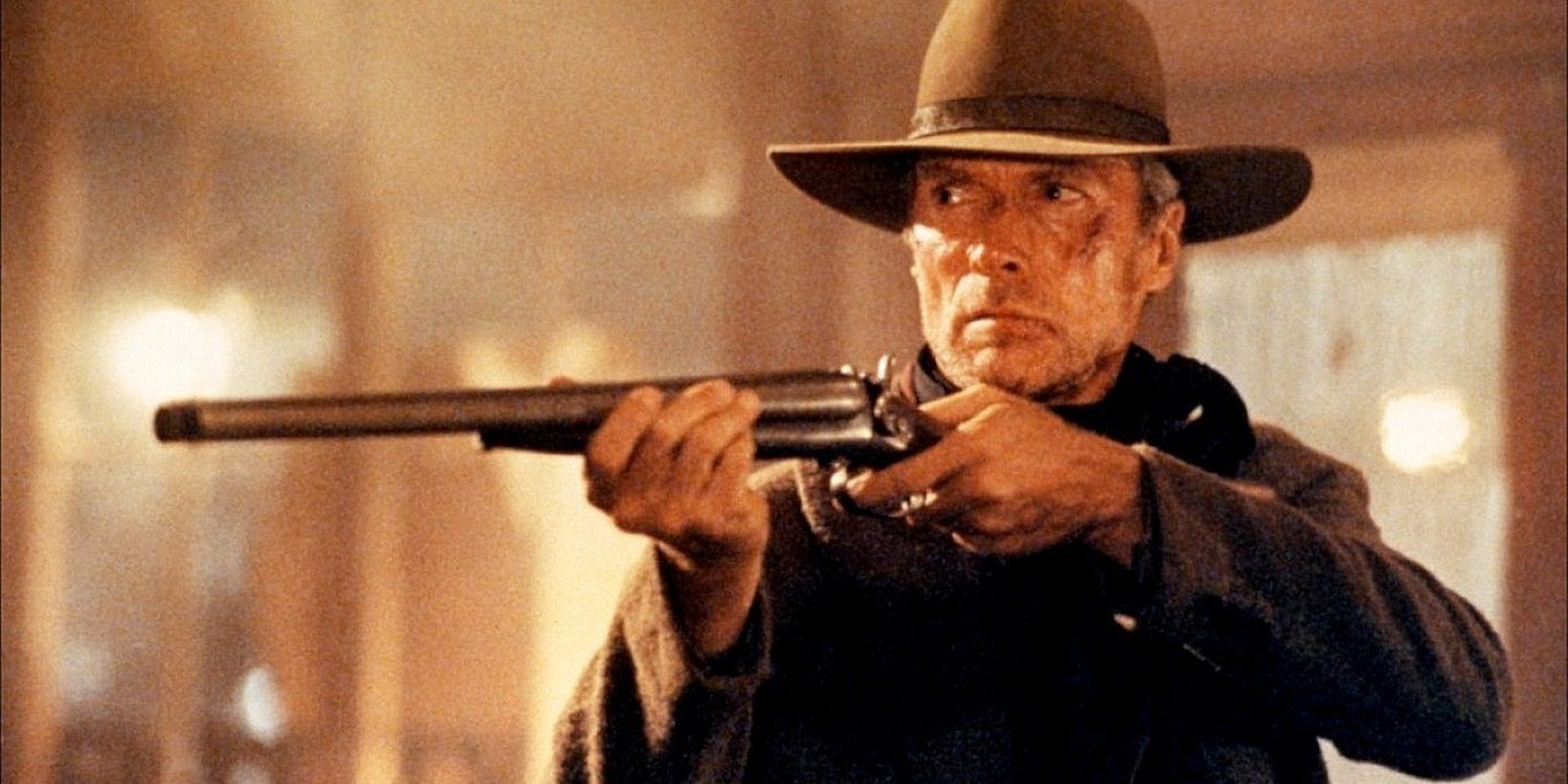
Unforgiven is Eastwood’s love letter to and deconstruction of the Western genre in one of the best films he directed and starred in. As Will Munny, Eastwood is a new version of the fearsome gunslinger he portrayed throughout his Westerns. He’s older, retired, out of the game, and looking to stay that way. However, in Unforgiven he gets pulled back in to face one of the worst villains he’s ever come up against. Gene Hackman plays the antagonist, Little Bill Daggett, a supremely evil character that Hackman easily embodies. Seeing the two powerhouse actors work together is a revelation.
By the end of the film, Munny has had enough of Daggett’s merciless killings and brutality and decides to face him and his henchmen alone. He enters the bar where they’re plotting and singlehandedly kills every man in there, including Daggett. It’s an incredible show of skill and precision, resulting in a final crushing exchange between Munny and Daggett. The moment is supremely memorable not only because of the high-stakes action and well-choreographed gunfight but because of the narrative weight the scene has within the film.
1Final Standoff – The Good, The Bad, And The Ugly (1966)
A three-way stand-off in a cemetery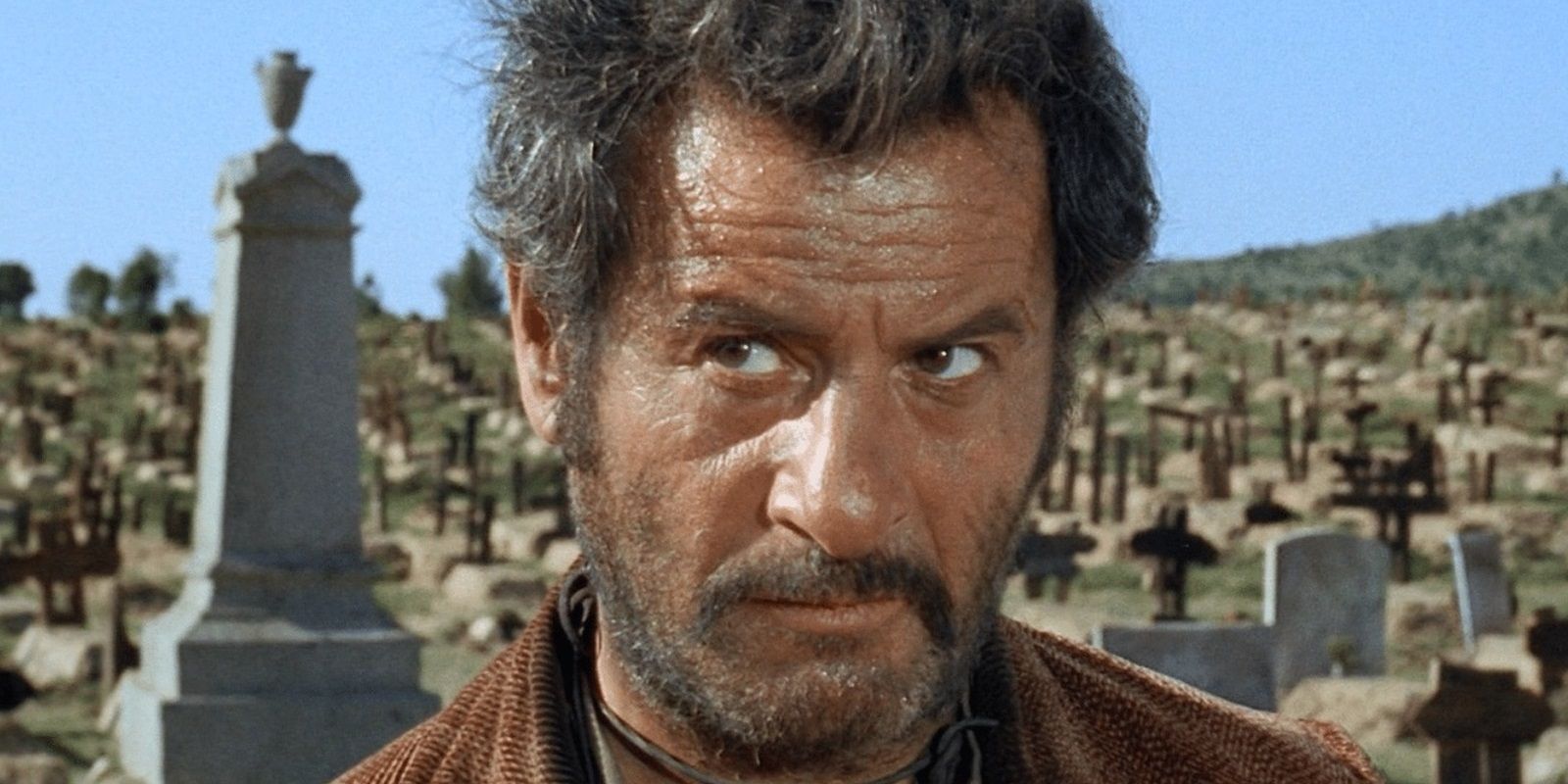
Some of the best quotes in the Man With No Name Westerns are in The Good, The Bad, and The Ugly, and the film also holds the best shootout in Eastwood’s filmography. In the movie, Eastwood returns as the Man with No Name/Blondie in the trilogy’s final installment, and this time he’s not up against one villain, but two. Tuco (Eli Wallach) and Angel Eyes (Lee Van Cleef) complete the central trio in the movie, and it’s up to Eastwood’s Blondie to outsmart them, and outshoot them, to get the trove of buried gold they’re all searching for.
However, both Tuco and Angel Eyes are cunning and dangerous, making the tension between them when they stand off in a triangle in the desert almost unbearable.
Eastwood has taken on multiple opponents in a single shootout, but none are as tense as in The Good, The Bad, and The Ugly. This is because when Eastwood’s characters shoot a group of characters, they’re usually minor antagonists or the main bad guy’s goons, so it’s expected that the expert marksmen that Eastwood portrays should easily outmatch them. However, both Tuco and Angel Eyes are cunning and dangerous, making the tension between them when they stand off in a triangle in the desert almost unbearable. Of course, Clint Eastwood comes out on top, but the suspense is brilliantly crafted.
